Over 5,000 successful surgeries, Highly Experienced Surgeons, Comprehensive Skin & Hair care
Acne also known as pimples, is a skin condition that develops when the oil producing glands are blocked. The main cause being excess of hormones as androgens.
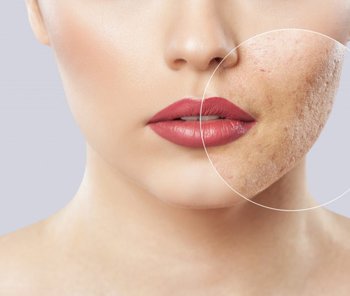
Most commonly pimples are seen on face, neck, shoulders and chest. If left untreated acne can cause scarring.
not to squeeze pimples.
Using antibacterial cleansers and astringents.
Avoidance of sun exposure.
Medical management with oral and topical antibiotics will effectively reduce acne. Chemical peels helps in reducing the oil production on face with faster recovery.
A skin allergy is an allergic reaction to a typically harmless substance, such as wool, pollen, soap, or plants. The immune system reacts to this trigger and attacks to remove it from the body. The result is an allergic skin rash, which tends to be red and itchy. Skin allergies encompass a number of allergic conditions, such as eczema, contact dermatitis, and hives.
A skin rash is the primary symptom of an allergic skin reaction. The rash may start as an itching sensation, a raised bump, or redness, and you might ultimately experience any combination of:
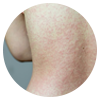
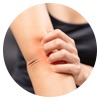
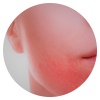
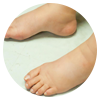

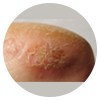
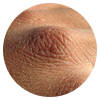
A skin allergy is caused by contact with a trigger. The immune system responds, causing a rash. Triggers that can lead to skin allergy include:
Fungal infections are common throughout much of the natural world. In humans, fungal infections occur when an invading fungus takes over an area of the body and is too much for the immune system to handle.
Fungi can live in the air, soil, water, and plants. There are also some fungi that live naturally in the human body.
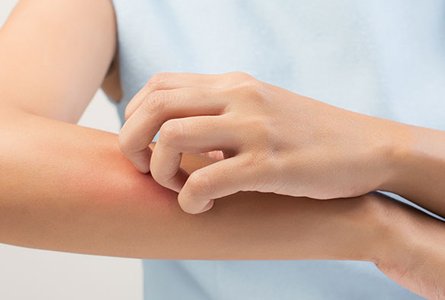
Like many microbes, there are helpful fungi and harmful fungi. When harmful fungi invade the body, they can be difficult to kill, as they can survive in the environment and re-infect the person trying to get better. In this article, we take a look at who is most at risk of getting a fungal infection and what the symptoms and treatment options are for some common types.
The symptoms of a fungal infection will depend on the type, but common symptoms include the following:
Skin changes, including red and possibly cracking or peeling skin.
Itching.
Eczema is an inflammation of the skin characterized by reddening, swelling, bumps and crusting, followed by thickening and scaling. It is also referred to as dermatitis.

Doctors do not know the exact cause of eczema, according to Jackie Suver, a skin-care expert and esthetician at MD Dermatology in Maryland. The current thinking is that it is triggered by a combination of factors, including genetics. People are more at risk of developing eczema if they have relatives with eczema, asthma, or seasonal allergies, she said.
Environmental factors, such as low humidity, can make the skin dry and itchy, according to the Cleveland Clinic. Contact with harsh soaps, chemicals, perfumes and skin care products that contain fragrance or alcohol may irritate the skin, as will some fabrics, such as wool, and tight clothing.
According to the National Eczema Association, symptoms include:
Dry, sensitive skin
Red, inflamed skin
Intense itching
Scaly areas
Recurring rash
Oozing and crusting
Rough, leathery patches
Swelling
Dark-colored patches of skin
Vitiligo (vit-ill-EYE-go) is a disorder in which white patches of skin appear on different parts of the body. This happens because the cells that make pigment (color) in the skin are destroyed. These cells are called melanocytes (ma-LAN-o-sites). Vitiligo can also affect the mucous membranes (such as the tissue inside the mouth and nose) and the eye.

Vitiligo is a disease in which the pigment cells of the skin, skin fading, melanocytes, are destroyed in certain areas.
Symptoms and signs of vitiligo include loss of skin color in the form of depigmented, or white, patches of skin in any location on the body.
Vitiligo can be focal and localized to one area, or it may affect several different areas on the body.
The exact cause of vitiligo is unknown, although most experts believe that it is an autoimmune condition in which the body's immune system mistakenly attacks and destroys certain cells within the body.
Most people who have vitiligo will develop the condition prior to age 40; about half develop it before age 20.
Vitiligo may have a genetic component, as the condition tends to run in families.
Vitiligo is sometimes associated with other medical conditions, including thyroid dysfunction.
There is no way to determine if vitiligo will spread or remain confined to one location.
The cause is not known. Vitiligo may be an autoimmune disease. These diseases happen when your immune system mistakenly attacks some part of your own body. In vitiligo, the immune system may destroy the melanocytes in the skin. It is also possible that one or more genes may make a person more likely to get the disorder.
Some researchers think that the melanocytes destroy themselves. Others think that a single event such as sunburn or emotional distress can cause vitiligo. But these events have not been proven to cause vitiligo.
Psoriasis is a skin disorder that causes skin cells to multiply up to 10 times faster than normal. This makes the skin build up into bumpy red patches covered with white scales. They can grow anywhere, but most appear on the scalp, elbows, knees, and lower back. Psoriasis can't be passed from person to person. It does sometimes happen in members of the same family.

Psoriasis usually appears in early adulthood. For most people, it affects just a few areas. In severe cases, psoriasis can cover large parts of the body. The patches can heal and then come back throughout a person's life.
The symptoms of psoriasis vary depending on the type you have. Some common symptoms for plaque psoriasis (the most common variety of the condition) include:
Plaques of red skin, often covered with silver-colored scales. These plaques may be itchy and painful, and they sometimes crack and bleed. In severe cases, the plaques will grow and merge, covering large areas.
Disorders of the fingernails and toenails, including discoloration and pitting of the nails. The nails may also crumble or detach from the nail bed.
Plaques of scales or crust on the scalp.
People with psoriasis can also get a type of arthritis called psoriatic arthritis. It causes pain and swelling in the joints. The National Psoriasis Foundation estimates that between 10% to 30% of people with psoriasis also have psoriatic arthritis.
Book an appointment and consult our dermatologists & plastic surgeons. Understand the problem and procedures in detail. We believe in giving sufficient time to our patients and help them make the right decision.